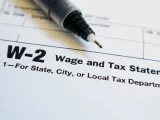
Residential Energy Tax Credits: What You Need to Know for 2023
June 7, 2023With the new year comes new energy tax credits! If you’re looking to upgrade your home’s energy efficiency, now is the time. The Residential Energy Tax Credit is a great way to offset the cost of energy-saving improvements. Here’s what you need to know to take advantage of this credit in 2023.
What are residential energy tax credits?
The Residential Energy Tax Credits is a tax credit for homeowners who make energy-efficient improvements to their homes. The credit is worth up to $500 for qualifying improvements made in 2021. The credit is available for a wide range of improvements, including solar panels, insulation, and energy-efficient windows. To qualify for the credit, you must own your home and file a federal income tax return. The credit is available for both new and existing homes. If you’re thinking of making energy-efficient improvements to your home, be sure to check out the Residential Energy Tax Credit.
Who is eligible for the credit?
The credit is available for homeowners who make energy-efficient improvements to their homes. The credit is worth 30% of the cost of the improvements, up to a maximum of $1,500. The credit is available for improvements made in 2021 and 2023. To be eligible, the improvements must be made to your primary residence. The credit is not available for rental properties or second homes.
How much is the credit worth?
The Residential Energy Tax Credits are available for a number of energy-efficient improvements to your home, including solar panels, wind turbines, and geothermal heat pumps. The credit is worth up to 30% of the cost of the improvement, with no upper limit. The credit is available for both existing homes and new construction, and it can be used for either primary or secondary residences. If you’re thinking of making energy-efficient improvements to your home, be sure to take advantage of this tax credit.
What types of expenses qualify for the credit?
The Residential Energy Tax Credits are designed to encourage homeowners to make energy-efficient improvements to their homes. There are two types of credits available: a credit for installing solar panels and a credit for making other energy-efficient improvements. The solar panel credit is worth 30% of the cost of the panels, up to $1,000. The other energy-efficient improvements credit is worth 10% of the cost of the improvements, up to $500. In order to qualify for either credit, the improvements must be made to an existing home that is your primary residence.
How to claim the credit on your taxes
The Residential Energy Tax Credits is a tax credit that helps offset the cost of energy-efficient improvements to your home. The credit is available for a variety of upgrades, including insulation, windows, doors, and heating and cooling systems. To claim the credit, you’ll need to file a Form 5695 with your tax return. The credit is worth up to $500, and you can carry any unused portion forward to future tax years. So if you’re planning on making any energy-efficient improvements to your home, be sure to take advantage of this tax credit.
With the new year comes new energy tax credits! If you’re looking to upgrade your home’s energy efficiency, now is the time. The Residential Energy Tax Credit is a great way to offset the cost of energy-saving improvements. Here’s what you need to know to take advantage of this credit in 2023.


